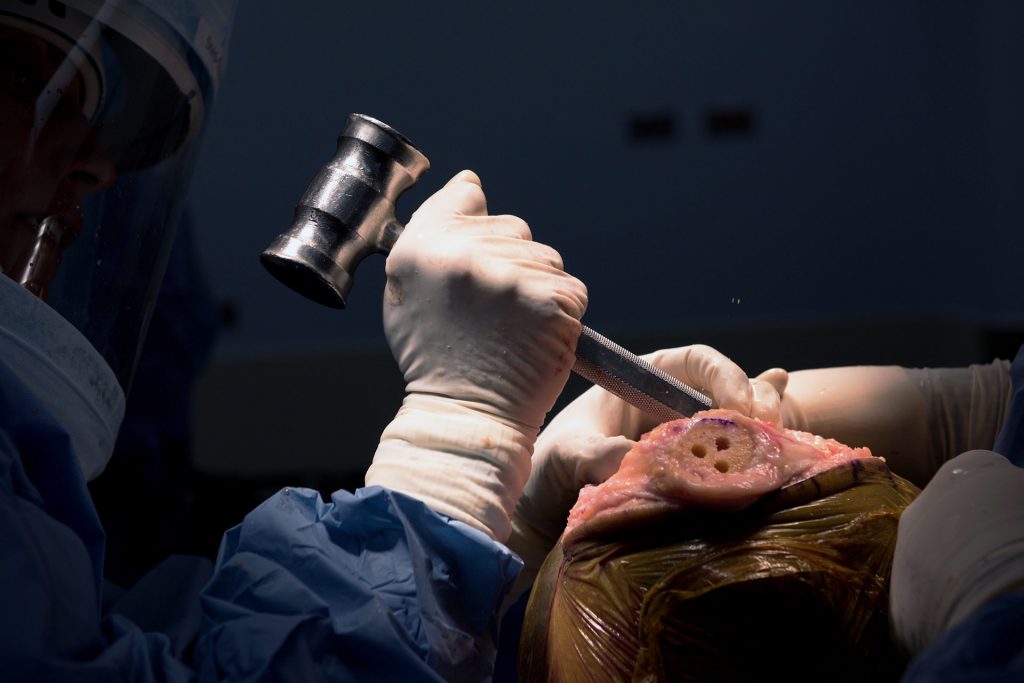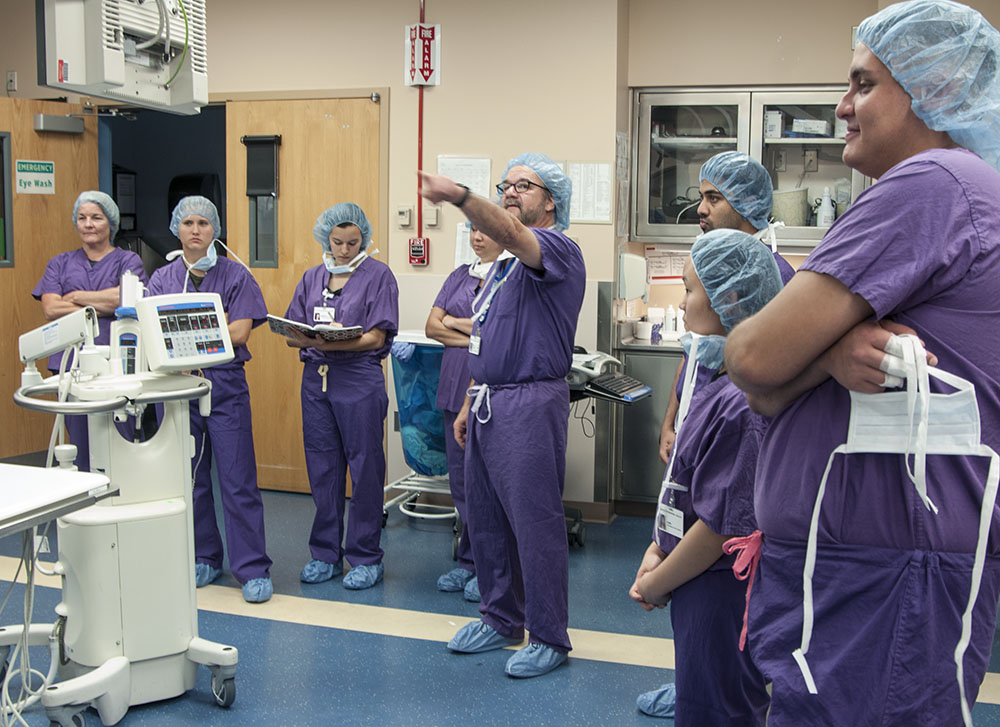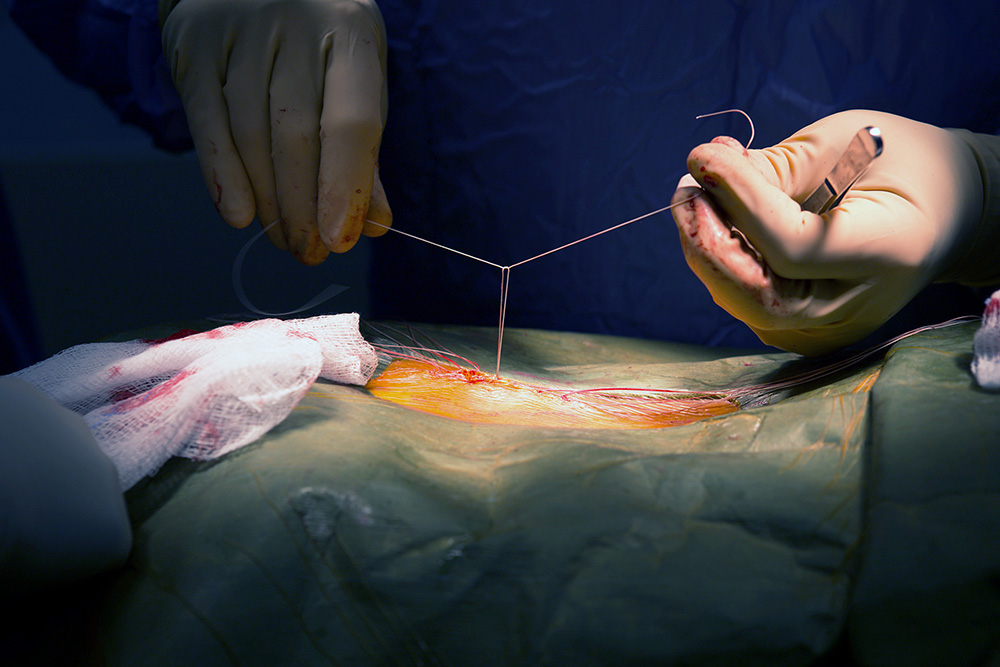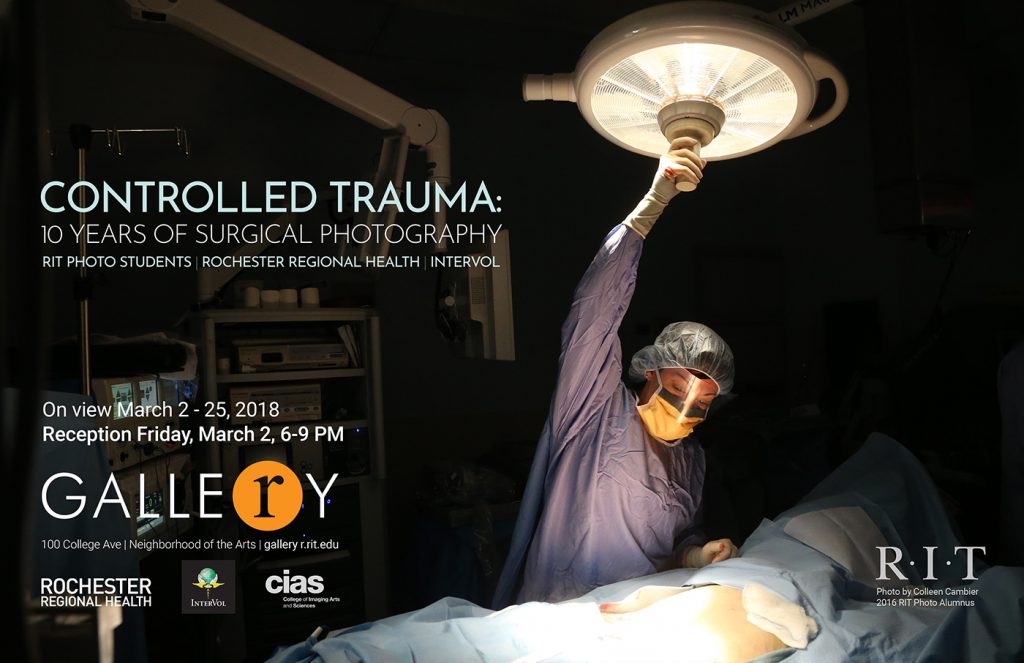From the Classroom: PHPS 307 – Surgical Photography
Friday March 2, The exhibition Controlled Trauma will open.
This exhibition features photographs that were taken in the operating rooms at the Rochester General Hospital(RGH). The photographs were made by students enrolled in a class available only at Rochester Institute of Technology.
A budding partnership that started almost a decade ago between RIT & Rochester General Hospital has provided unique access to the hospital, surgical patients, and related medical procedures. This access allowed the students the opportunity to explore and photograph this unique subject. Students in the class quickly realize how very fortunate they are to be able to photograph in this sanctuary for used for improving an individuals health through the use of invasive procedures. Many comment how they enjoyed the personal experience of photographing in a place that very few will ever visit as a photographer. Shared below is a video produced by Justin Gerard, a May 2017 alum from the Photographic Sciences program
Smartphones and other contemporary digital tools have created unique opportunities for photographic and imaging applications that did not exist just a decade ago in health care and all areas of society for that matter. The role of photography in the digital era has transformed medical photography, the photographic documentation of medical cases, and profoundly influenced directions of medical education. Digital technologies have also created conundrums such as the sharing of confidential medical records(photographs) electronically and when – or if it is appropriate – to publish medical images on social media. Students in this class have experienced each of these elements as part of their classroom experiences.

Photo by Teri Zgoda
This exhibition was mounted to celebrate the success of the surgical photography class. The exhibition includes at least one photograph from each of the 112 students who have taken the class beginning Fall 2009. In the time since the first offering of this class, a number of students have become surgical photographers at organizations such as the Mayo Clinic. In fact, Lynne Tseng who took the first class is now a co-instructor of this class and works at Rochester General Hospital. While some of the photographs are very graphic in nature, there are others that share the human side of the operating room as witnessed by student photographers.
None of this would have been possible without the many, many people and organizations who saw this an opportunity to do something special. RITphoto wants in particular to thank Dr. Ralph Pennino, FACS, MD for his interest in this subject and the Rochester General Hospital for their support in welcoming photography students into this most private place. A special debt of gratitude is also warranted for the surgeons and operating room staff, who are so incredibly helpful to the students as they entered this “scary” room for the first time. We appreciate InterVol’s participation in the exhibition as well by generously providing the various artifacts displayed along with the photographs. There are many others who have generously provided so much to the mounting of this once-in-a-time exhibition including Lynne Tseng, the College of Imaging Arts and Sciences who provided a grant for printing, John Aasp, Gallery R and to the Biocommunications, Assn. EFFE fund.

Pictured above, Dr Ralph Pennino discusses where to stand and how to interact with surgeons during the fall 2017 class orientation to the operating rooms at RGH. This orientation is the only opportunity for students to speak with him directly when preparing to photograph surgeries. There is a lot to take in. Following the orientation, the operating room will become their classroom for the upcoming 15 weeks. Protocols, expectations, how to, what to do will become vital to their ability to be successful in this class.
About the Exhibition
The first offering of the surgical photography was in the fall of 2009. Since that time, one hundred and twelve students have taken the surgical photography class course. The students have come from all programs in the School of Photographic Arts and Science photography including MFA students. Each student has been exposed to all the issues and methods used in contemporary surgical photography as well as being able to observe surgeons at work in ways that very few will ever. During the eleven classes that have been offered, students have been exposed to range of personal emotions and experiences while photographing medical procedures in the operating rooms at Rochester General Hospital. As part of the course, students were required to subscribe to proper file management and to sign contracts insuring that they comply with HIPAA (health information patient privacy act) regulations. Making pictures of patients comes with great responsibilities and the images that were selected for display were done so with the objective of insuring patient confidentiality. Great lengths were undertaken to provide a truthful sharing and one that celebrates the student experience.

Photo by Abigail Semler
At the end of a course, a student might have visited the surgical theater at least three times to make photographs. In some cases, they have visited more than 10 times. Each week during the class, they can select to attend procedures from a myriad of cases including orthopedic, plastic, neuro and general surgeries to name a few as well as robotics. Additionally, students have been engaged with contemporary medical topics, ethics, protocols and relevant discussions in critiques. Whether they have produced effective and /or interesting surgical medical photographs in this class is but a part of the experiences they have gained. In 11 classes, students have photographed surgeries led by talented and dedicated surgeons that were performed in state of the art facilities. More than 90,000 pictures were made in the decade .
This exhibition showcases selections from the class archive which includes photographs from the recently completed class completed this past fall (2017 semester). You might be interested to know that the student photographs are now characterized as medical records and housed in an image data base in the department of surgery and are used for educational and marketing purposes. Images when known are attributed to the maker.
